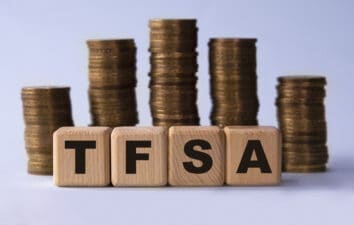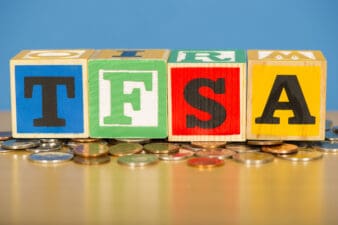Many investors are looking to take advantage of the market crash by putting cash to work. But some don’t have the cash available, so they’re turning to another option. These aggressive investors are borrowing cash to invest.
A borrow-to-invest strategy has a few downsides, of course. Anytime you risk cash that’s not your own, catastrophic losses can happen. Many people use their home as collateral for such a strategy, which means the worst-case scenario is losing the house.
But this rarely happens in real life, especially if you stick with a portfolio of solid Canadian stocks. In fact, I’d argue it’s relatively easy to build a portfolio that yields more than you’d pay in interest, never mind any potential capital gains as the market recovers. The real risk is what happens if the investment goes down in value.
Let’s take a closer look at a couple stocks that would look good in a borrow-to-invest portfolio, and some potential tax pitfalls with the strategy you’ll want to avoid.
How to borrow to invest
You’ll want to remember one important thing when borrowing to invest. The best strategy is one that’s more conservative.
For instance, a great borrow-to-invest stock is Rogers Sugar. This steady performer should be helped by more folks baking at home during COVID-19 lockdowns. It also features a solid moat, protection from imported sugar thanks to the Canadian government, and the company recently expanded into the maple syrup business. And perhaps most importantly, Rogers pays a steady $0.09-per-share quarterly dividend — a payout that translates into a 7.7% yield.
Another solid performer that would look good in a borrow-to-invest portfolio is Algonquin Power and Utilities. This company has two separate divisions, both with interesting growth potential. One is acquiring various power, natural gas, and water utilities. The other is building and operating power plants. This business has held up great during the recent market downturn and has a history of dividend growth behind it. Shares currently yield a robust 4.6%.
A combination of these two stocks will give investors a starting yield of more than 6% with a bit of growth potential added in. That’s a solid start to any borrow-to-invest portfolio.
What to know before you borrow to invest
One reason why many investors are attracted to such a strategy is, you can write off the interest. This further boosts your after-tax profits.
Say you borrow $50,000 and invest it at a 5% yield. You’ll pay 3% annually for the privilege. Total income from this strategy would be $2,500, but it would be offset by a $1,500 annual expense. This translates into a $1,000 annual profit on the income portion of the portfolio alone. It’s likely to be much more once we factor in capital gains.
But investors need to keep one thing in mind before they embark on a borrow-to-invest journey. You must put the investments in a taxable account. If you put them in a TFSA or RRSP, you’re not able to deduct the interest.
Many folks looking at this strategy end up making this mistake.
If using your house for collateral worries you, the easier way to implement this strategy is to use your online broker’s margin. You’ll need plenty of existing assets in the account to avoid the dreaded margin call, and be sure to watch the interest rate. Some brokers charge upwards of 5-7% annually. Most offer quite reasonable rates, and, perhaps most importantly, your broker will track the total interest charged. That makes it much easier come tax time.
The bottom line
A borrow-to-invest strategy can be useful. It allows you to take advantage of temporarily depressed stock markets, like we have today. Just remember to keep a somewhat conservative portfolio and to use any borrowed funds on a taxable account and the strategy should work nicely for you.








